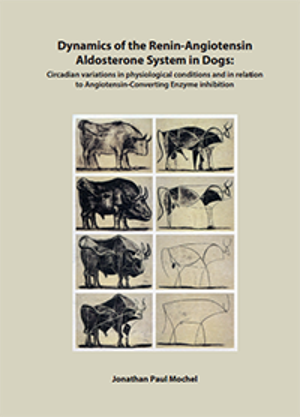Proefschrift
Dynamics of the renin-angiotensin aldosterone system in dogs: circadian variations in physiological conditions and in relation to angiotensin-converting enzyme inhibition
Promotor: Prof.dr. M. Danhof
- Auteur
- J.P.M. Mochel
- Datum
- 24 maart 2015
- Links
- Thesis in Leiden Repository

We have developed an integrated PK/PD model that adequately captures the disposition kinetics of benazeprilat, as well as the time-varying changes of systemic renin-angiotensin aldosterone (RAA) biomarkers without, and with ACE inhibition therapy. This mechanistic representation provides a quantitative framework for better understanding the effect of ACE inhibition on the RAAS in dogs, but also in humans. Our data show that benazepril influences the dynamics of the renin-angiotensin-aldosterone cascade, resulting in a profound but temporary decrease in angiotensin II (AII) and aldosterone (ALD), while increasing RA for about 24 hours. Based on recent literature in human heart failure (HF) patients (Güder et al., 2007), the reduction of AII and ALD may be one of the drivers of increased survival and improved quality of life in benazepril-treated dogs. To support and consolidate this hypothesis, additional efforts should be directed towards collection of circulating RAA peptides in spontaneous cases of canine HF. If such a link can be established, profiling of these peptides could support the determination of the severity of heart failure, complement clinical and echocardiographic findings, and be used for therapeutic drug monitoring purposes.
